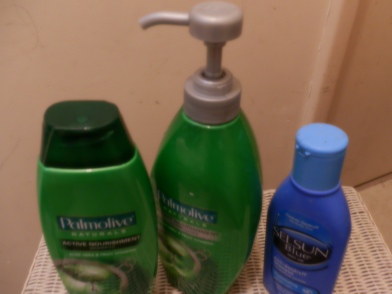Portfolio 1, Q. 1
One of the keys to aesthetic design is usability. Lidwell, Holden and Butler (2003, p. 18) argue that the first impression of a design will ultimately shape the user’s attitude toward the product. It can elicit a positive response, evoke positive emotions and create a positive relationship with the design. Lawrence and Tavakol (2010, p. 125) highlight how purchase decisions are influenced by a mixture of aesthetics, usability and purpose. On the other hand, Norman (2002, p. 38) highlights how everyday items are not necessarily aesthetically pleasing and that usability is not necessarily linked to aesthetic stimulation. However, Norman (2002, p. 42) concludes that usability is intrinsic to the beauty and pleasure of a product.
Lidwell, Holden and Butler (2003, p. 18) highlight the role of emotions when using a product. An unaesthetic design conjures negative emotions unlike the aesthetically pleasing product that elicits positive emotions. Spillers (2004, p. 7) confirms that emotions shapes user experience. On the other hand, Coehlo (2014, p. 187) suggests that design exceeds functioning and usability and moves into emotion. However, van Gorp and Adams (2012, p. 16) firmly plant the usability of a product with its emotional connection, arguing that emotion shapes our user experience.
Lidwell, Holden and Butler (2003, p. 18) discuss the role of first impressions of a product within user experience. A bad impression of a design will inevitably shape the consumer’s attitude toward using that product. However, Buck (1963, p. 8) reiterates that first impression are not everything. Buck (1963, p. 8) suggests that a pleasant design must be matched by long-term usability. When the first impression and the novelty had subsided, the product design must stand the test of time. On the other hand, Peak, Prybutok and Chenyan Xu (2014, p. 149) highlight how first impressions are not only momentary but long-lasting. But they also reiterate that a positive user experience solidifies the product’s value (Peak, Prybutok & Chenyan Xu, 2014, p. 149). Usability and function are, therefore, a critical component of design (Buck, 1963, p. 8).
Portfolio 1, Q. 2 (+ activity)

The toothbrush, the toilet roll and the shampoo bottle are everyday items. But these three bathroom products highlight the interconnectedness between usability and design.
Greed (2003, pp. 215, 216) discussing the functionality of toilet rolls, highlights the importance of height, the use of a roll and its single sheet function. But its usability does not proceed its aesthetics. Groth (2006, p. 84) highlights the design benefits of embossing, suggesting “the effect can be subtle, sophisticated and eye-catching.”

Fiore (2010, p. 4) highlights how quality is expected, but aesthetics differentiates products. The same applies to the humble toilet roll. The quality of rolls over the product range is difficult for customers to differentiate. Softness and thickness are external features that customers may observe. But the aesthetics of the packaging and design are critical.
Yang and Chen (2005, p. 235) highlight how the toothbrush design “is more elastic and good looking which are thought to be good features that attract customers.” They highlight the “different neck shapes” and show that there is link between toothbrush elasticity and customer satisfaction (Yang and Chen, 2005, p. 235).

Michlewski (2008, p. 382) discusses the perceptions of ‘ugly’ and ‘beautiful’, suggesting that form takes precedence over function in the minds of society. Taste and preference become key ingredients to design choices (Michlewski, 2008, p. 382). This is no less true for the toothbrush. Bramston (2009, p. 109) reiterates how colour becomes the first impression for a customer and influences the purchasing choice. Interestingly, Bramston (2009, p. 109) highlights how “bright” colours have the impression of tasting good. The taste, therefore, incorporates both usability and aesthetics.
Pallidino (1972, p. 38) highlights the significance of the shampoo bottle shape. He suggests that “the graceful line of an elegantly tinted bottle is more pleasing than some of the ugly square bottles that have been, and still are, used.” (Pallidino, 1972, p. 38). But aesthetics are not the only factors in purchasing shampoo. Its features, whether it is designed for dry hair or shiny hair, must match the aesthetics of the design.

REFERENCES
Bramston, David (2009). Basics Product Design 01: Idea Searching. Switzerland: AVA publishing.
Buck, C. Hearn (1963). Problems of Product Design and Development. Oxford: Pergamon Press.
Coelho, Denis A. (2014). “Specification of Affective User Experience in Product Design.” Taken from JI, Yong Gu & Choi, Sooshin (Eds.), Advances in Affective and Pleasurable Design. USA: AHFE Conference. Pp. 185-193.
Fiore, Ann Marie (2010). Understanding Aesthetics for the Merchandising and Design Professional. New York: Fairchild Books.
Greed, Clara (2003). Inclusive Urban Design: Public Toilets. Oxford: Architectural Press.
Groth, Chuck (2006). Exploring Package Design. Australia: Delmar Cengage Learning.
Lawrence, Dave & Tavakol, Soheyla (2010). Balanced Website Design: Optimising Aesthetics, Usability and Purpose. London: Springer-Verlag.
Lidwell, W., Holden, K., & Butler, J. (2003). Aesthetic-Usability Effect. In Universal Principles of Design (pp. 18‐19). Massachusetts: Rockport.
Michlewski, Kamil (2008). “Uncovering Design Attitude: Inside the Culture of Designers.” Organization Studies 29(03). Los Angeles & London: Sage Publications. 373-392. DOI: 10.1177/0170840607088019
Norman, Don (2002). “Emotion & Design: Attractive Things Work Better.” Interactions 9(4), July 2002. ACM. Retrieved from http://www.jnd.org/dn.mss/emotion_design_at.html
Palladino, Leo (1972). The Principles and Practice of Hairdressing. London & Basingstoke: The MacMIllan Press.
Peak, Daniel A.; Prybutok, Victor R. & Chenyan Xu, Richard (2014). “A New Perspective on Visual Design with Information Systems.” Taken from Mehdi Khosrow-Pour (ed.), Inventive Approaches for Technology Integration and Information Resources Management. USA: IGA Global. Pp. 143-161.
Spillers, Frank (2004). “Emotion as a Cognitive Artifact and the Design Implications for Products That are Perceived as Pleasurable.” Design and Emotion. Retrieved from https://www.experiencedynamics.com/sites/default/files/publications/Emotion-in-Design%20.pdf
Van Gorp, Trevor & Adams, Edie (2012). Design for Emotion. USA: Morgan Kaufmann.
Yang, Z. Y. & Chen, Y. H. (2005). “Product Customization in a Virtual Environment.” Pp. 233-238 Taken from Bártolo, Paulo Jorge (ed.), Virtual Modelling and Rapid Manufacturing: Advanced Research in Virtual and Rapid Prototyping. London: Taylor & Francis Group.
